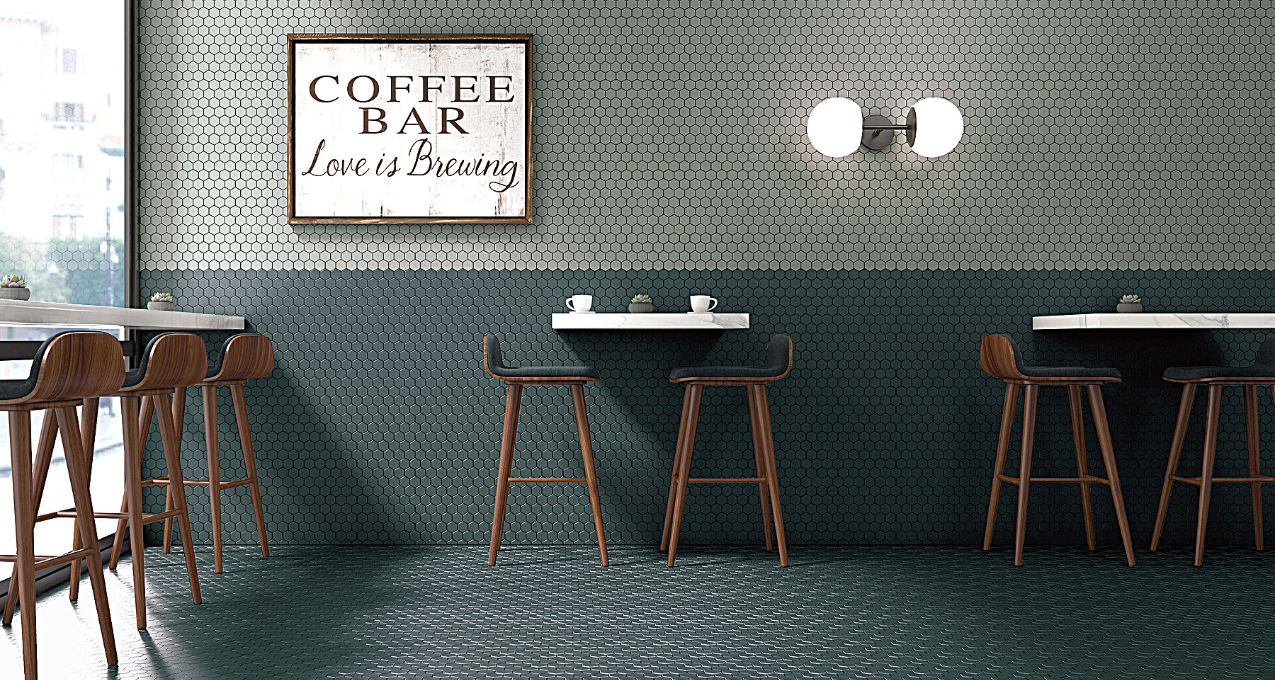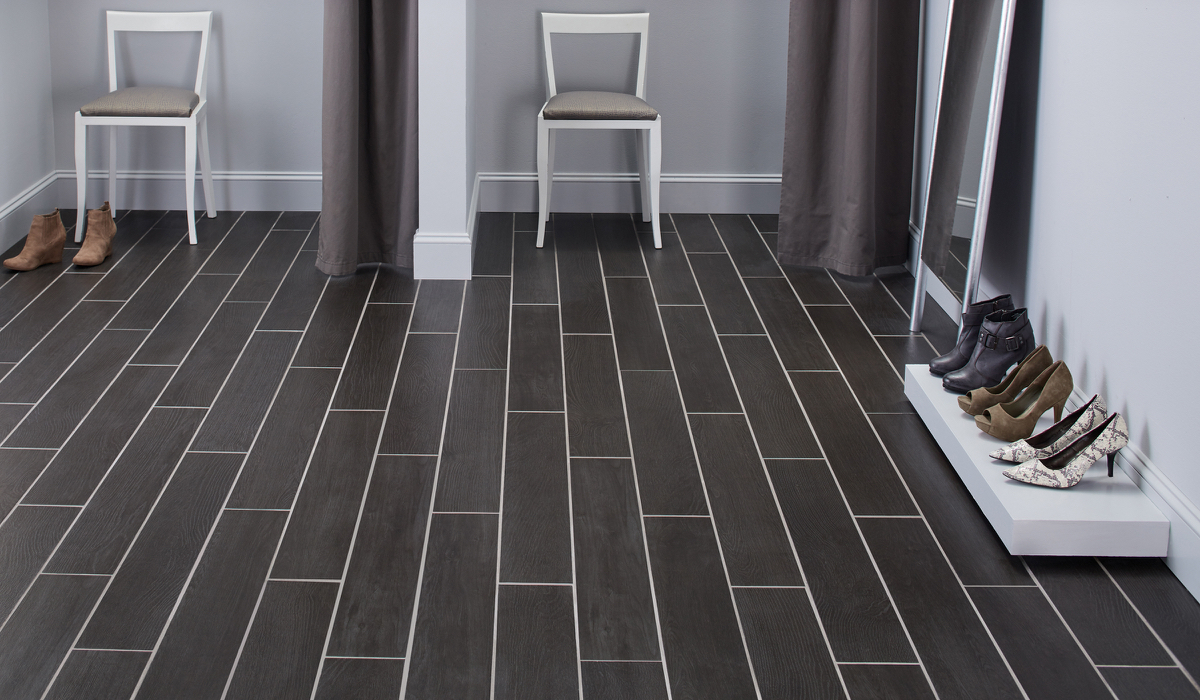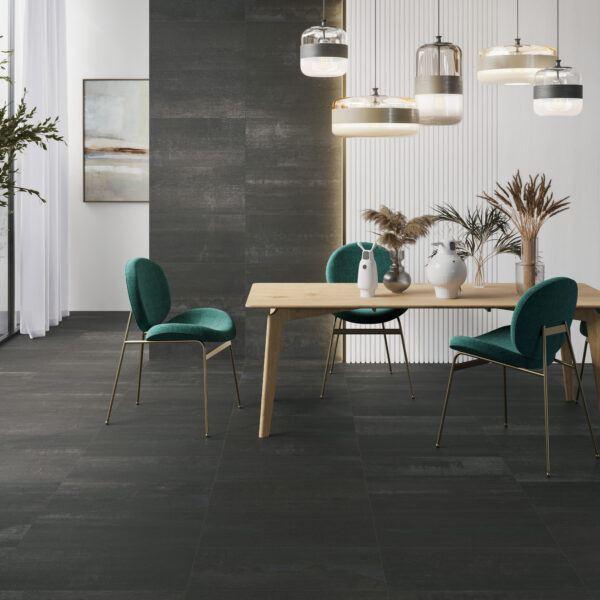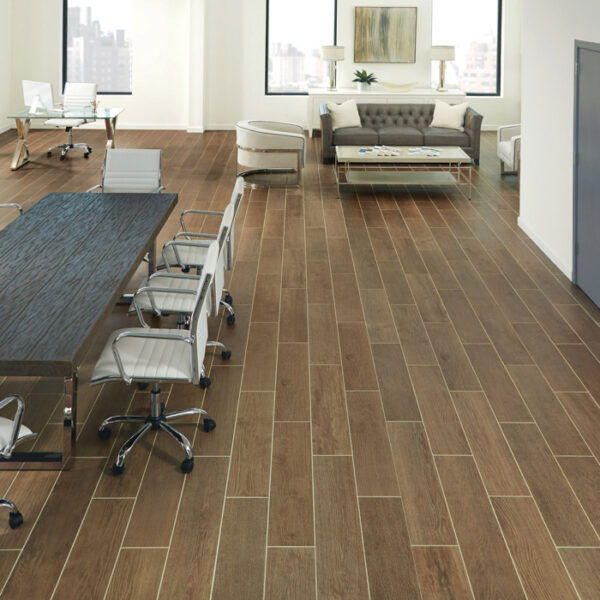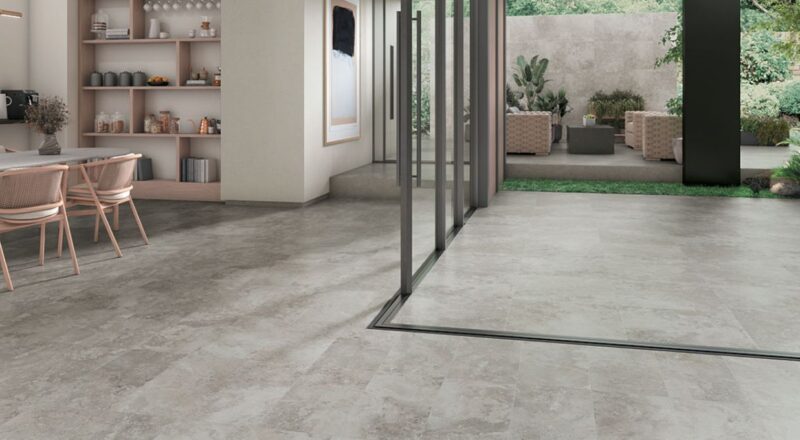Standard Cement Grout
The most commonly used and the most economical is standard cement grout. Tile contractors and installers are all familiar with it, as it’s been used in the industry for 50 years! Installation of standard cement grout is straightforward, and clean-up is easy, but this type of grout is also porous and should be sealed with a quality sealer. Keep in mind that sealer will add higher labor and material costs to your tile installation. Depending on how often the tile floor or wall is cleaned and what types of cleaners you use, standard cement sealers will need to be replaced every few years.
There are two types of standard cement grout:
Sanded Grout
Sanded grout is comprised of sand mixed with portland cement (the most common type of cement in general use worldwide as a primary ingredient of concrete, mortar, stucco, and non-specialty grout.) Per ANSI A118.6 (American National Standards Institute (ANSI) A118.6, Specifications for Standard Cement Grouts for Tile Installation), sanded grout can be used in joints 1/8” or greater. The sand adds compressive strength and reduces shrinkage in joints. (A118.6 establishes minimum performance levels for compressive strength, flexural strength, shrinkage, and water absorption.)
Non-Sanded Grout
You’ll want to use non-sanded grout when the grout joint is 1/8” or less (per ANSI A108.10 ) or for for tile that scratches easily.
Pros & Cons of Standard Cement Grout
Pros
- Economic
- Forgiving to use
- All installers are familiar with it
- East to install
- Easy to clean
- A solid choice if you’re on a budget
Cons
- Discoloration of grout from shade variation during curing
- Stains incurred from regular use
- Should be sealed every few years
Where to Use Standard Cement Grouts
Standard cement grouts are best suited for areas that won’t likely to get wet or soiled by food. Sanded grout is appropriate for floors, ceramic tiles, natural stone tiles, and unpolished porcelain tiles. Use unsanded cement grout for wall tile, tiles that can easily scratched, such as some natural natural stone tiles (like marble), metal tiles, glass tiles, mosaic tiles, and polished porcelain tiles.
High-Performance Cement Grout
High-performance cement grout is also a portland cement-based grout, but it has higher strength and is less porous. High-performance cement grout complies with ANSI A118.7. Recommended joint widths are the same as standard cement grout (1/8” width or greater)
These premium, high-performance grouts are becoming more popular and are taking more market share of the grout installation industry. While they are slightly more expensive than ordinary portland cement grouts, the cost per square foot to upgrade to premium grouts is less today, given that the typical grout joint width is now between 1/8″ to 3/16″ versus the 1/4″ average width that has been used for years. Additionally, the large-format tiles that are more on-trend than the smaller tiles of the past require fewer grout lines per square foot of tile. With the smaller joint widths and the larger tile designs used today, you get more coverage, which helps reduce the cost of the grout.
Pros & Cons of High-Performance Cement Grout
Pros
- Harder and denser for better performance
- Better color consistency
- More stain resistance
- Sealer not required but beneficial
Cons
Slightly more expensive (approximately 5 cents per square foot)
Where to Use High-Performance Cement Grouts
High-performance cement grouts (Type A118.7) can be used on floors, kitchen backsplashes and countertops, shower enclosures, tub surrounds, and steam showers.
Ready to Use Grout
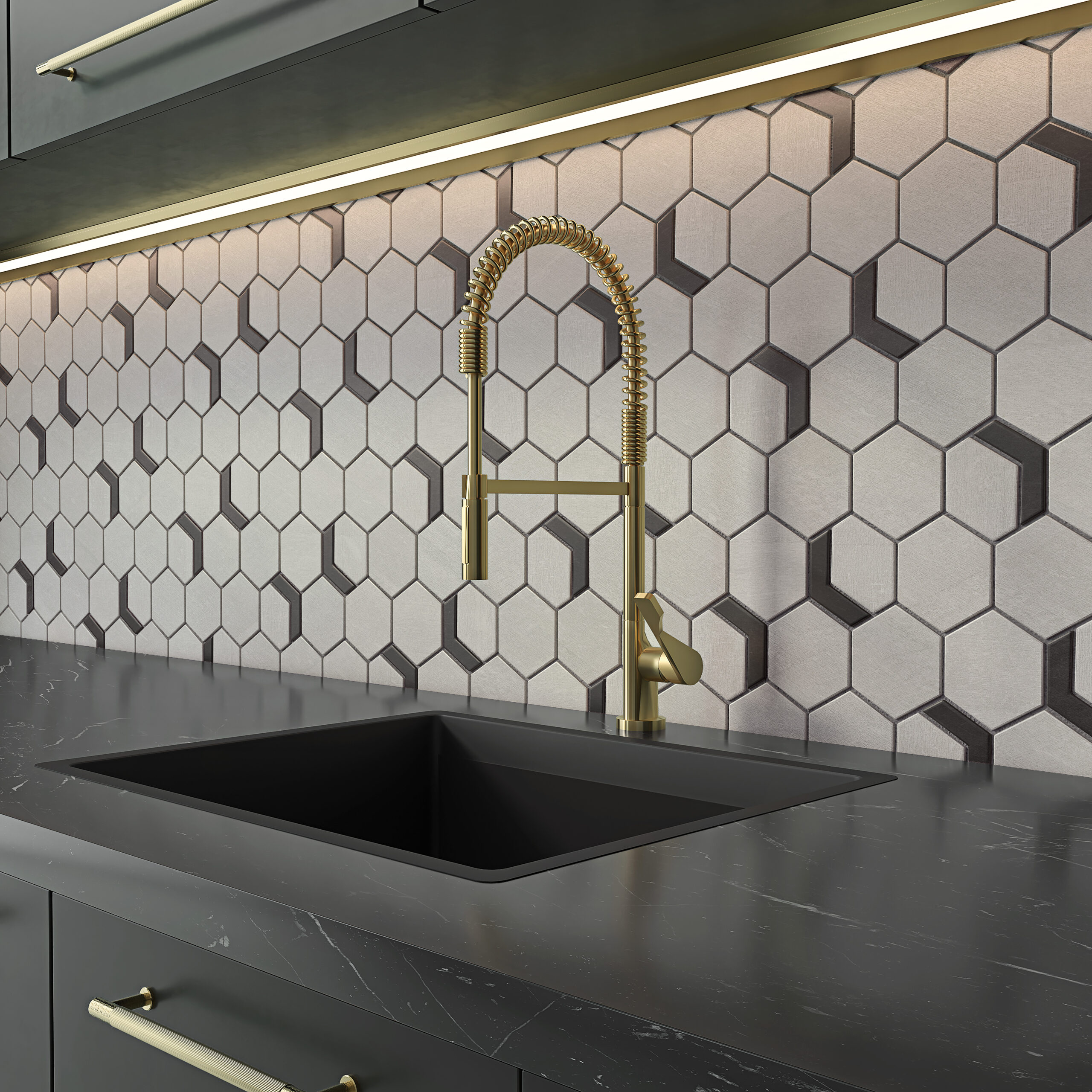
Native Metal metallic perforated deco (resin)
The Ready-to-Use (RTU) grout category has recently grown in popularity. RTU grouts do not currently have an ANSI industry standard. However, TCNA (Tile Council of North America) is working on an industry standard for Ready-to_Use grout. You should check with the grout manufacturer for recommended widths.
RTU grout has evolved from premixed grout into a premium, high-performance grout material that is “ready-to-use,” faster to install, and has excellent chemical and stain resistance. RTU has been compared to epoxy grout in terms of its stain and chemical resistance, but RTU grout is much easier than epoxy grout to install. RTU grouts can be formulated with either a urethane, acrylic, or hybrid chemistry. If you want a bright color, RTU grout is an excellent grout to use!
Pros & Cons of Ready-to-Use Grout
Pros
- Excellent stain & chemical resistance
- Easier to install than epoxy
- No water or mixing required
- Color consistency
Cons
- Installation in high-humidity environments can result in delayed curing
- High-quality RTU grouts can be expensive
- Because they are sanded, RTU grouts may scratch glass or stone tiles
- Some RTU grouts can soften in high heat and humidity
- Urethane-based premixes turn yellow in the sun
Epoxy Grout
 Stones at Large porcelain floor and wall tile
Stones at Large porcelain floor and wall tile
Epoxy grout is made from epoxy resins and a colored filler powder. It comes in two parts that, when mixed, start a chemical reaction that gives epoxy all its best qualities. Mixing also starts the grout setting up, so it has to be applied quickly in small batches. Epoxy grouts meet or exceed industry standard, ANSI A118.3. Epoxy grout is considered the most durable and robust of all the grouts and has superior stain and chemical resistance. However, the installation can be more challenging as epoxy grouts are generally two- or three-component mixtures that require special mixing and handling at the job site.
Pros & Cons of Epoxy Grout
Pros
- Consistent color
- Best choice for environments where harsh chemicals are used
- It is essentially waterproof
- Extremely durable
- Almost completely resistant to stains
Cons
- More expensive than cement grouts
- May take longer to apply than cement grout
- More difficult to work with
Where to Use Epoxy Grout
Epoxy grout is an ideal choice for backsplashes, floors, high-traffic areas, and demanding commercial environments such as healthcare, commercial kitchens, and schools.
Grout Guide — Quick Reference Sheet
Download the Quick Reference Sheet here.
A Word About Grout Haze
Grout haze is when a thin layer of grout coats tiles after installation, making the tiles look hazy. During installation, the entire tiled surface gets covered with grout. If the excess is not properly cleared from the tile, the remaining grout eventually dries out, leaving behind a dull white mineral film. The cloudiness might not appear until a few days after installation.
How to Remove Grout Haze
Some grout haze can be wiped off with a damp towel or cheesecloth, but some will likely require a special grout haze remover. Do not wait more than ten days to remove the haze. If you wait more than ten days, you may need to use a harsher, full-strength haze and film remover.
Do Some Grouts Leave a Haze That’s More Difficult to Remove Than Others?
If the grout is epoxy-based, haze can be more difficult to remove because these grouts are designed for maximum strength and stain-repellence. You’ll need to use a product designed to handle a more stubborn grout haze. If your tile is natural stone, always select a product formulated specifically for that material.
Want To Learn More About Tile? Visit Crossville’s Tile 101!
Learn all about tile with Crossvillle, Inc. We’ll teach you what to keep in mind as you buy, how to install it, and how to care for your tile floors, walls, and countertops. Click here to vist Tile 101.

